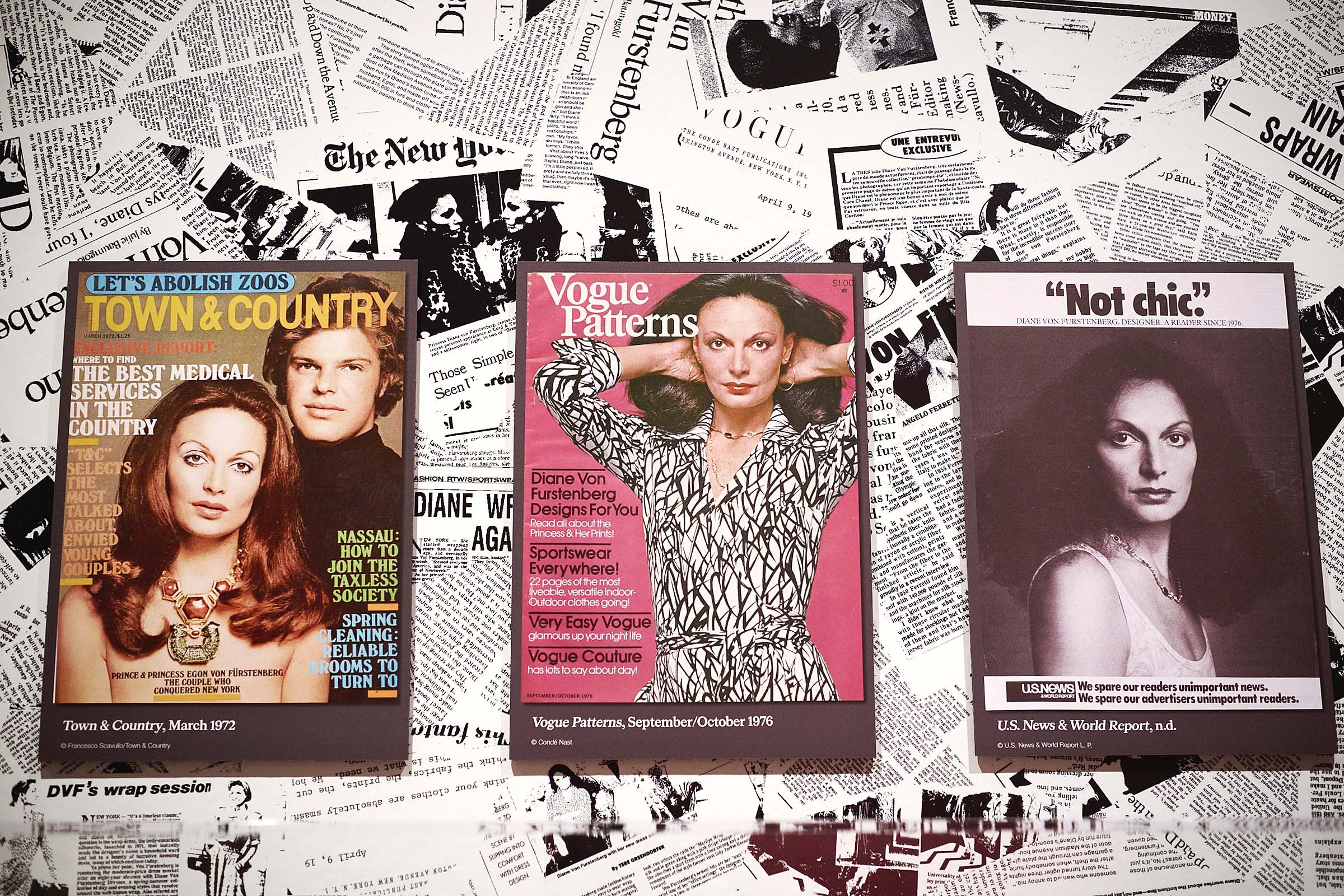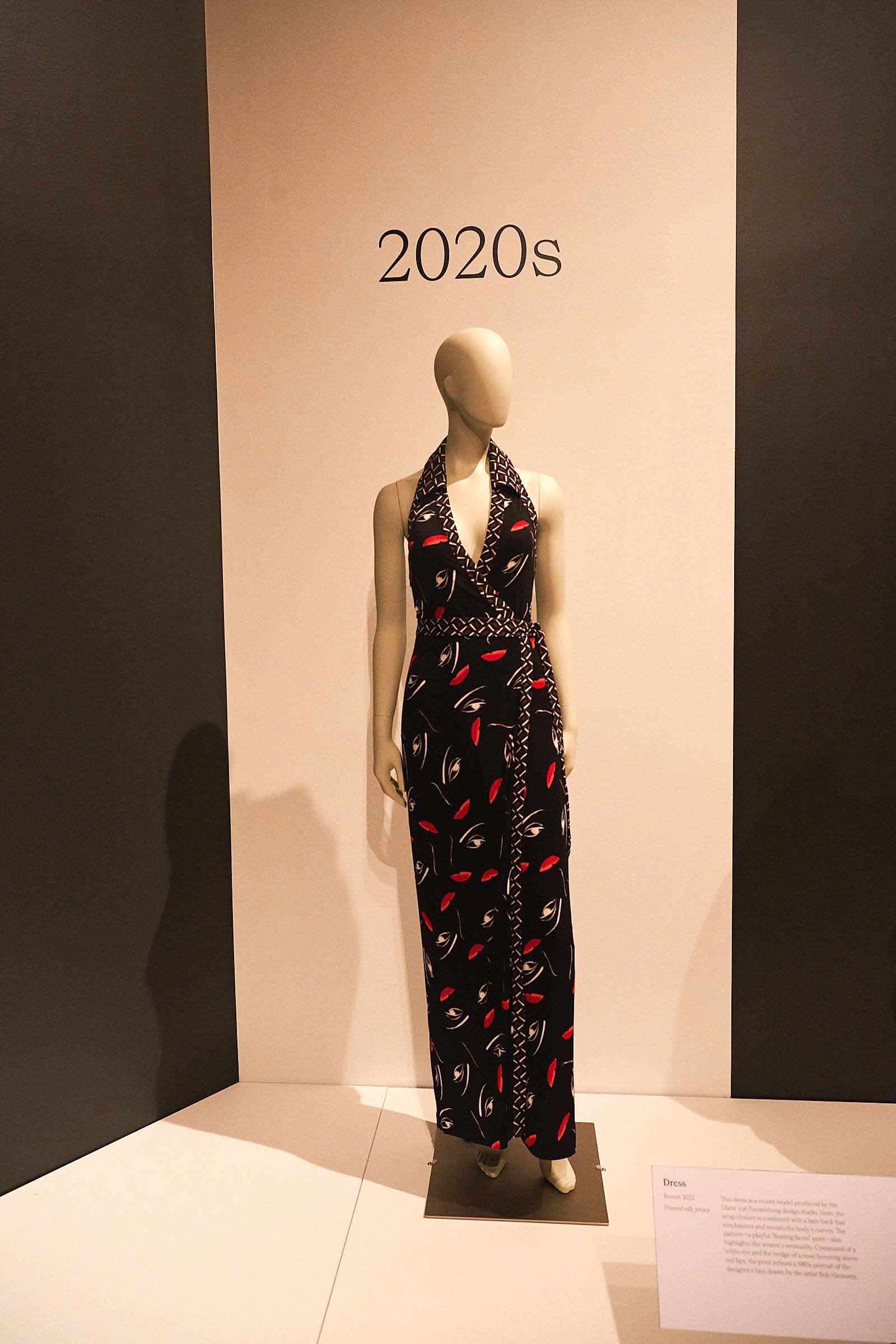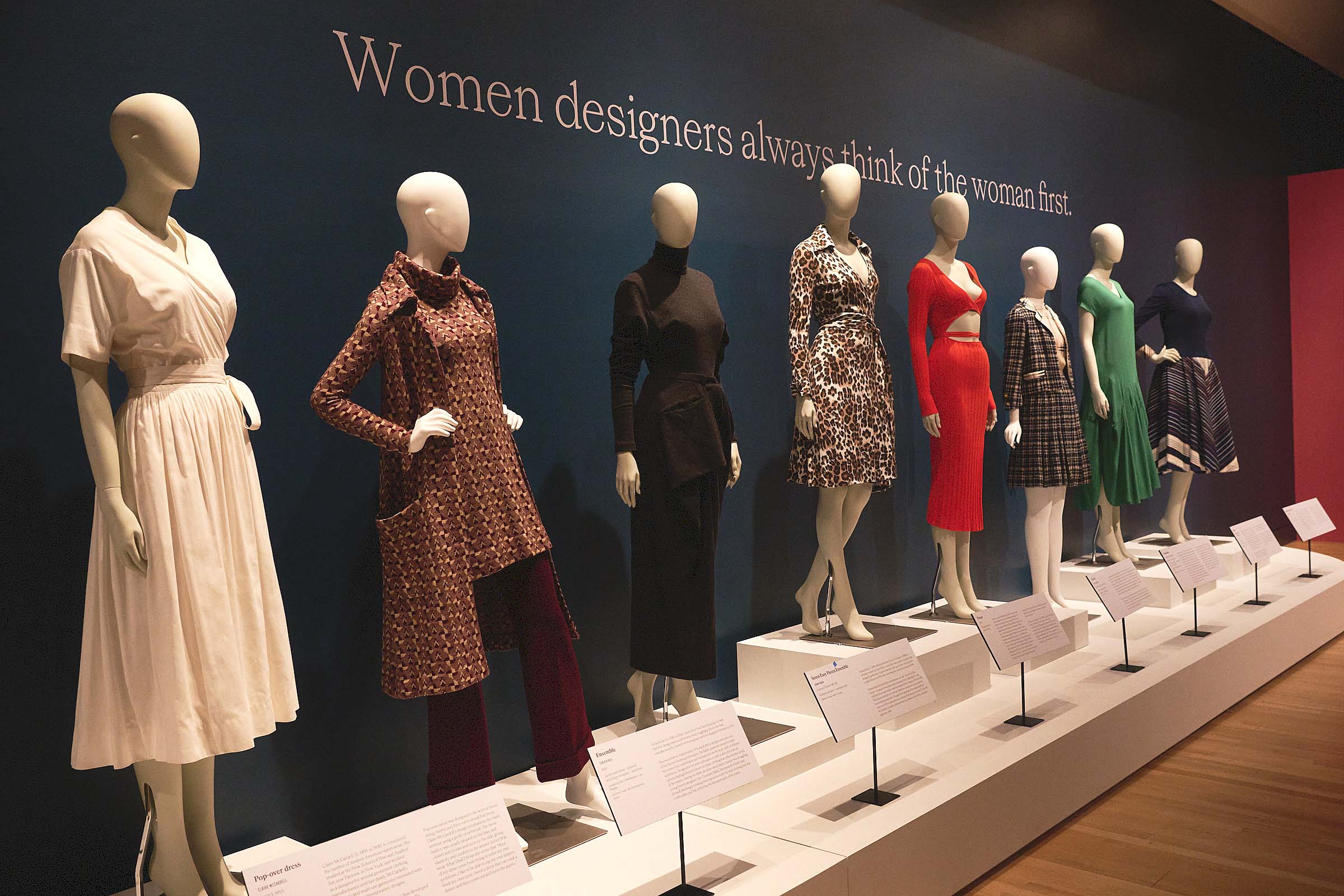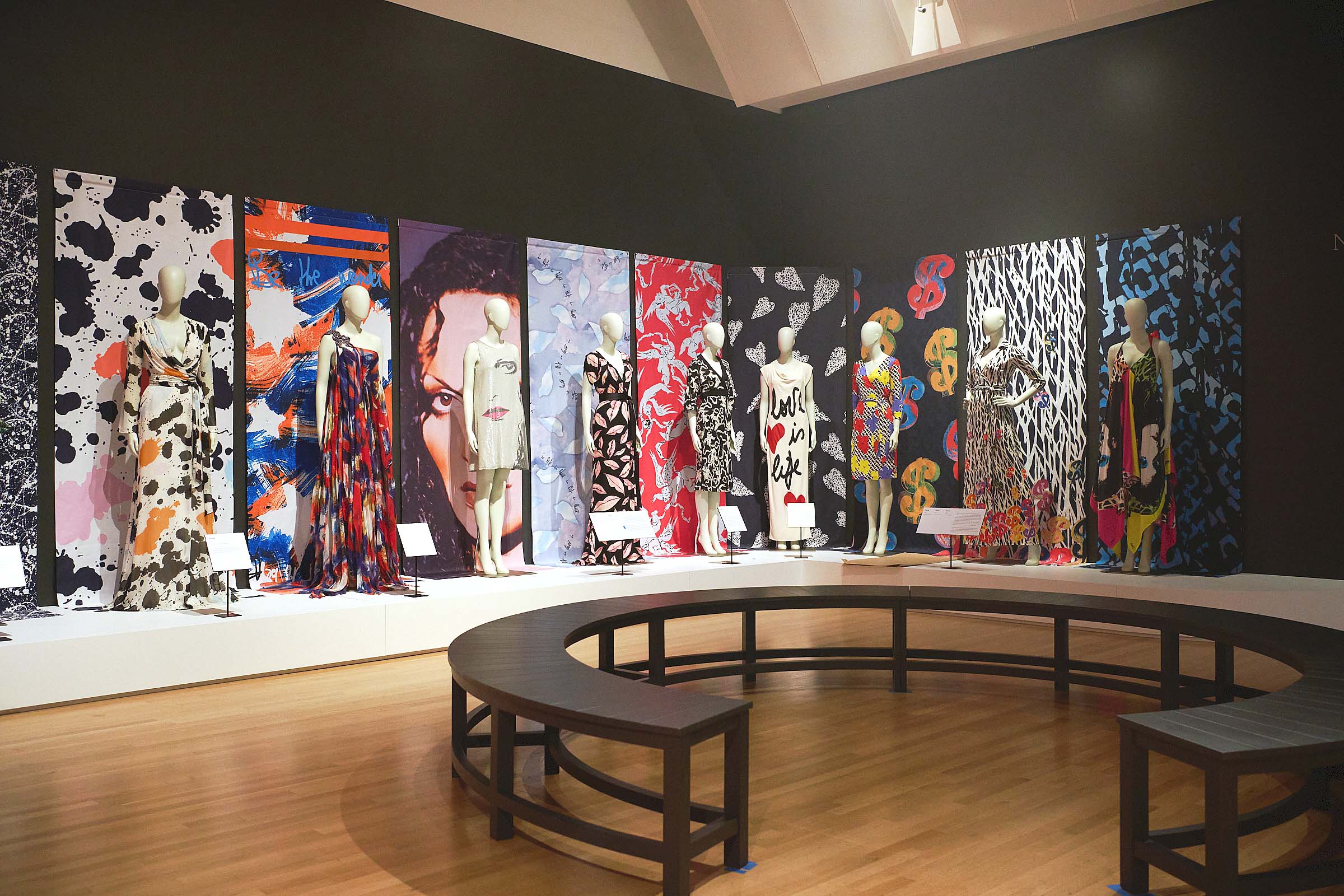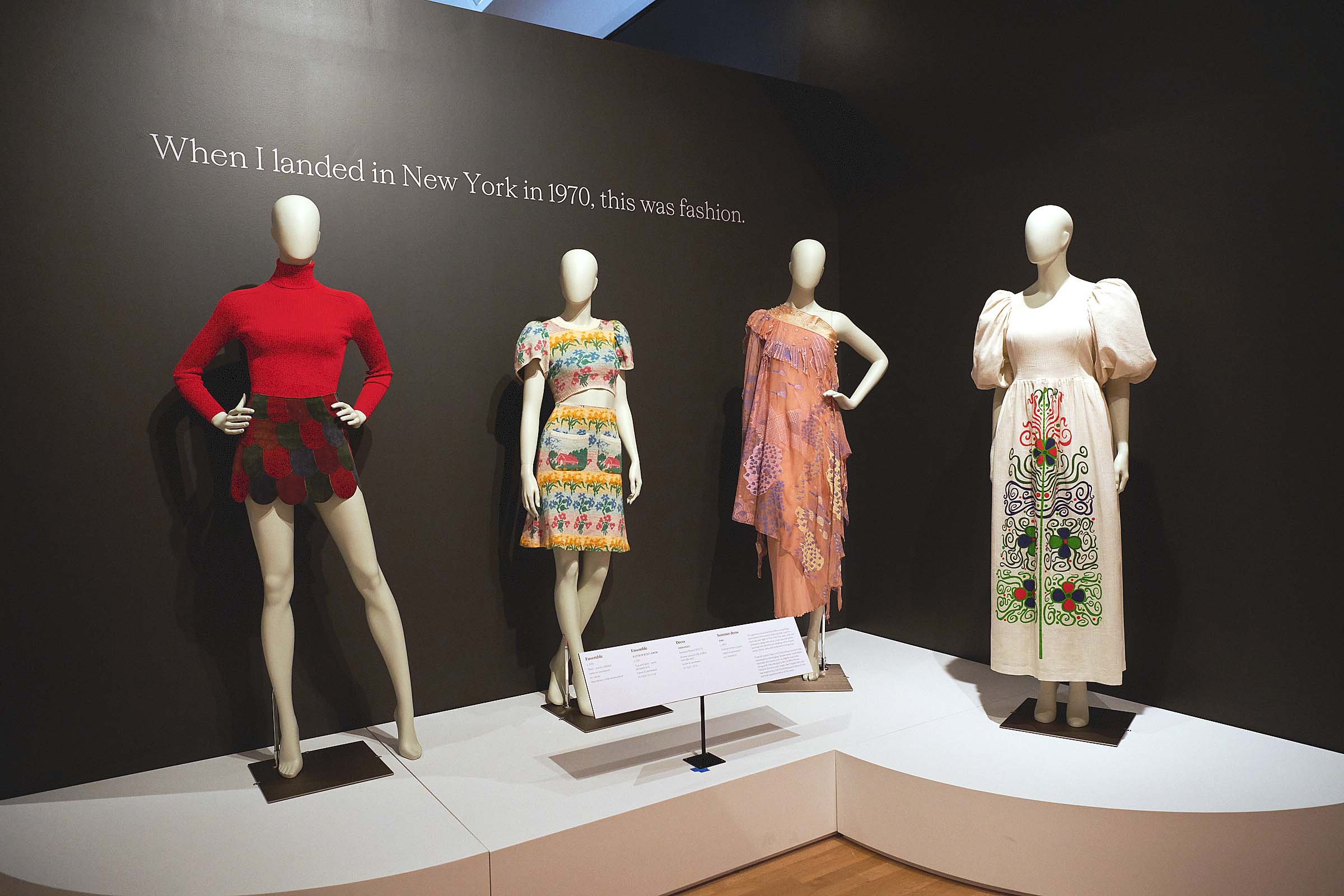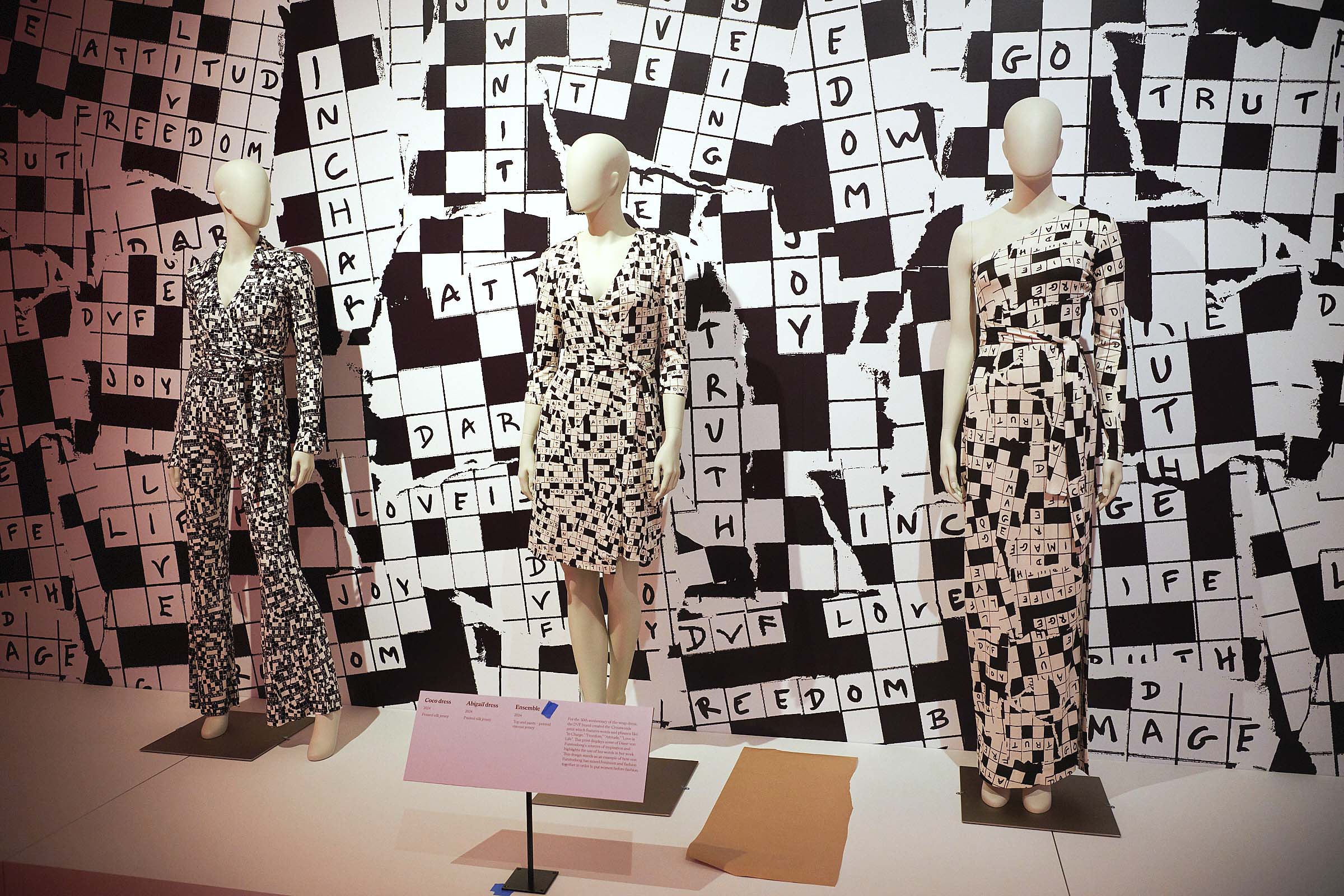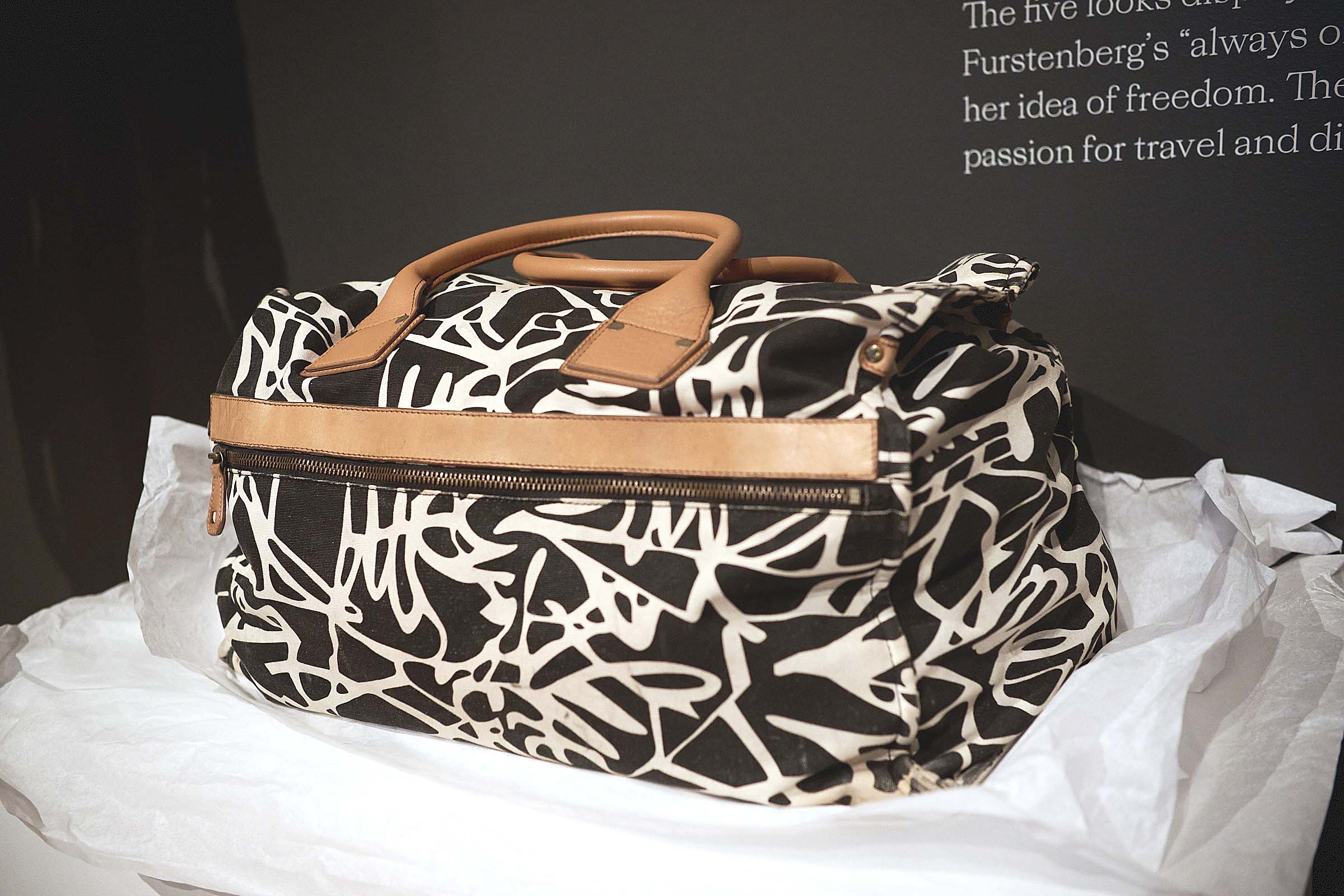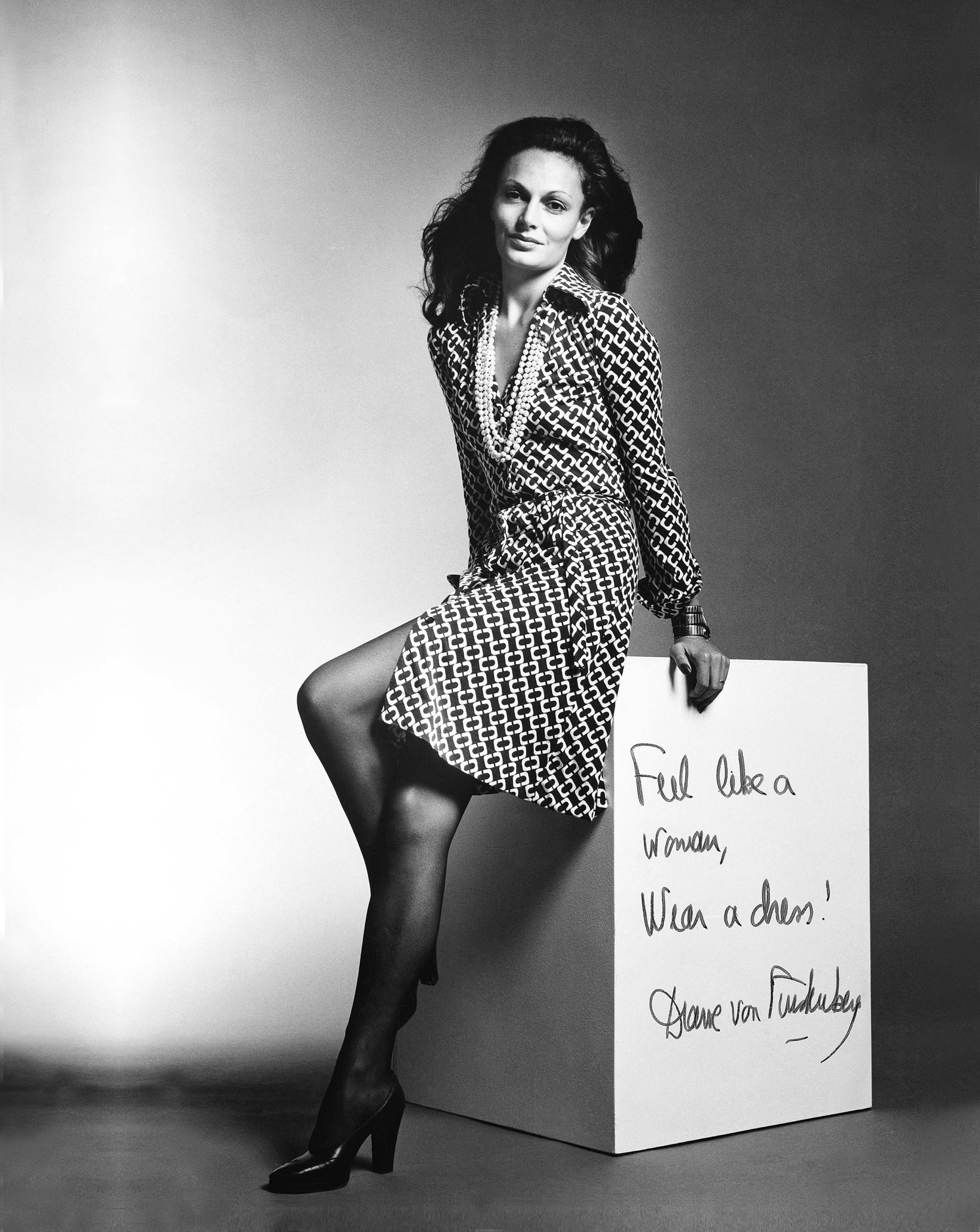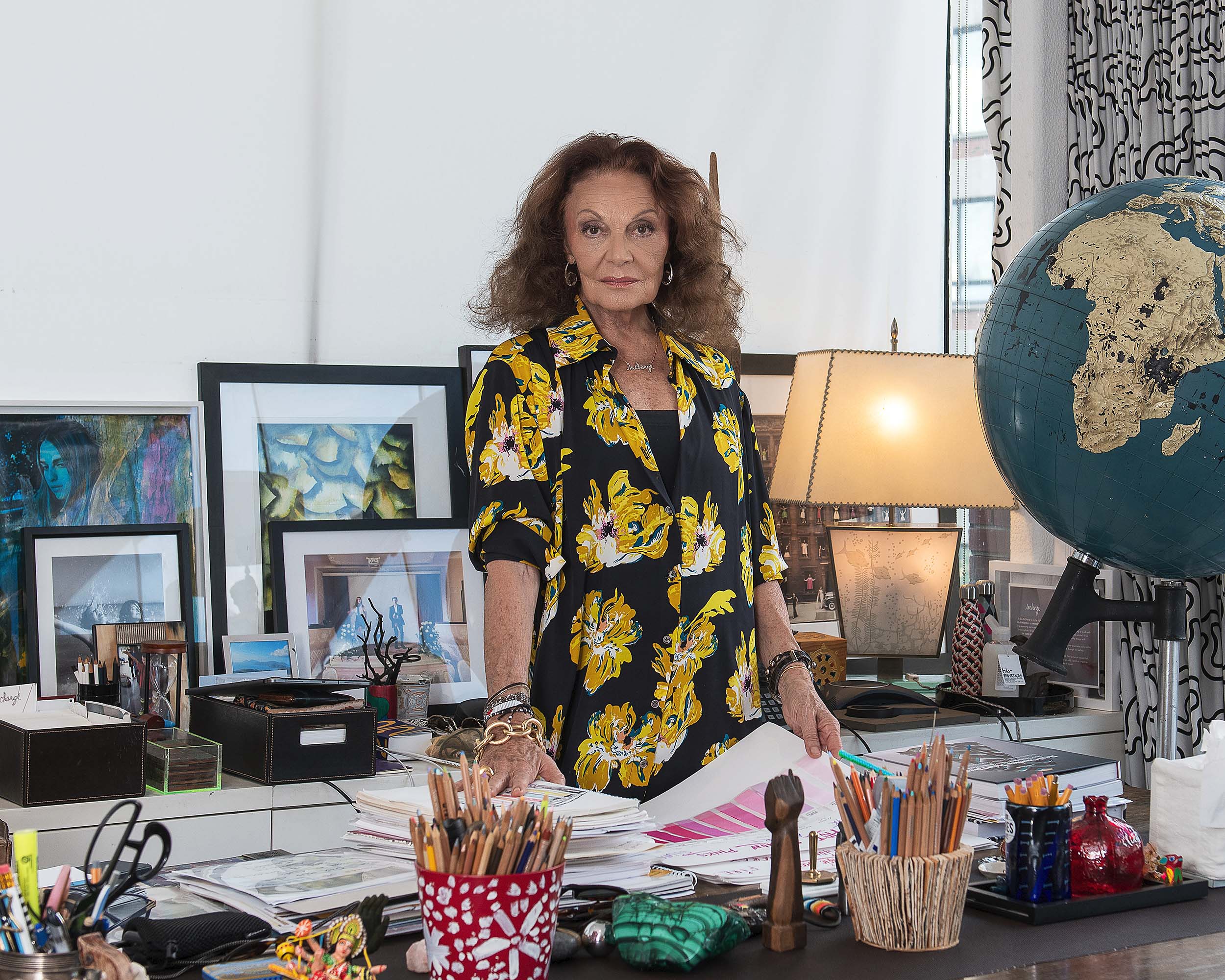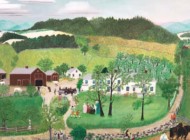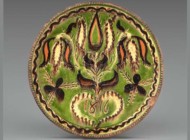
Inspiration came from the wrap-around top worn by ballerinas in Paris, and originally the wrap dress was a top and skirt before a one-piece ensemble. Halban Photography, courtesy of Skirball Cultural Center.
By Laura Layfer
LOS ANGELES — “Diane von Furstenberg: Woman Before Fashion” is currently on view at the Skirball Cultural Center, a renowned repository for thousands of artifacts and contemporary objects related to Jewish traditions around the globe. Born in Belgium, von Furstenberg’s life and work are deeply rooted in the plight of her family and particularly that of her mother, Lily Nahmias, a Holocaust survivor. While the show originated at the Fashion & Lace Museum in Brussels, von Furstenberg’s hometown, the second venue — and only North American one to date — provided an opportunity to further explore the heritage that helped to shape her course. As a leading American designer, now celebrating more than half a century of her iconic wrap dress, this multidisciplinary exhibition looks at the inspirations and innovations of her creations and their longevity.
The author of multiple books and the subject of a newly released Hulu documentary titled Woman in Charge, this is the first time von Furstenberg shared some of the documents, including intimate writings, that belonged to her mother. Nahmias was of Greek descent and had joined the Resistance movement with her parents when they emigrated to Belgium. Captured by the Nazis, it was on the train as she was deported to Auschwitz where she was able to take a piece of scrap paper, scribble a note to her parents and toss it to the tracks in the hope that it would reach her home. Today, a copy has been reproduced and is on view, along with additional personal audio and mementos. Upon her liberation in 1945, Nahmias reunited with her family and her fiancé, though was told the possibility of children was impossible. Soon after, Lily gave birth to her daughter, declaring her “my torch of freedom.”
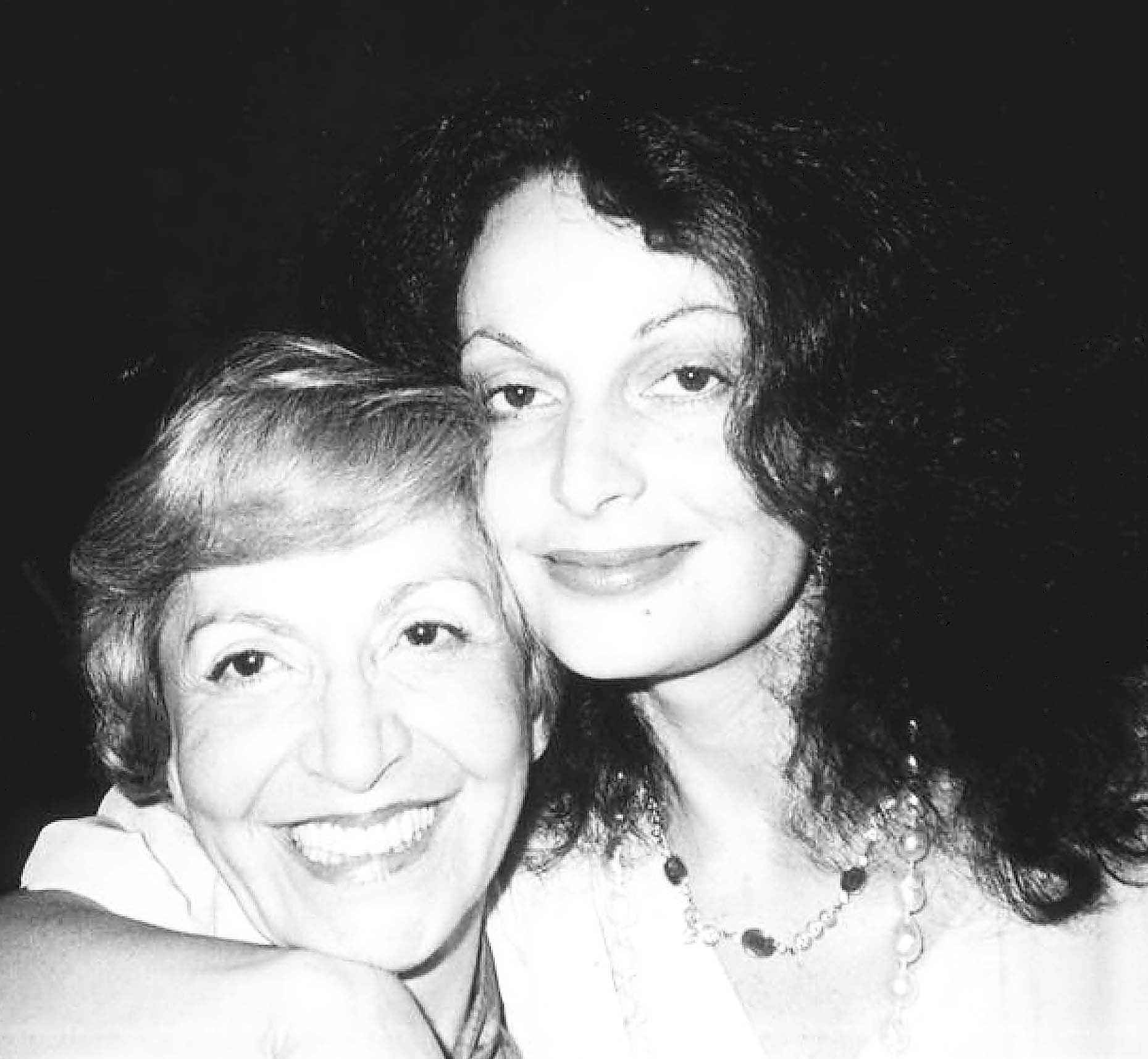
Diane and her mother, Lily Nahmias. Bob Colacello photo courtesy Diane von Furstenberg Archives.
The focus on Lily in such detail was a new component that added to the Skirball’s iteration. “We really wanted to flesh out the concept of freedom and give it context,” notes Cate Thurston, chief curator at the Skirball. “Diane was so generous with access to herself and her archives.” Thurston collaborated with von Furstenberg’s company and team, as well as closely with Nicholas Lor, head of exhibitions and publications at the Fashion & Lace Museum and the curator for the European edition. While the Skirball’s galleries feature distinct themes tracing von Furstenberg’s career from 1970 to the present, the notion of independence is a constant throughout.
When Diane married Austrian Prince, Egon von Furstenberg, the couple moved from Europe to New York City, where they were glamorous fixtures on the social scene at hangouts like Studio 54. Yet, separated in 1972, then 26 years old and with two young children, von Furstenberg, as her mother had always told her, knew “fear was not an option.” In previous media, von Furstenberg often referenced her experiences as a young girl and being locked in a dark room by her mother to learn not to be scared. It was an element of Lily’s desire to pass down that survivor instinct, and, in retrospect, perhaps it tailored von Furstenberg’s vision and even her imagination for the road ahead.
It was 1974 when she launched the wrap dress, made of silk jersey fabric. It was based on a range of elements from ballerinas and their twisted and tie tops to Japanese kimonos. It started as a top and a skirt until the notion of a one-piece made sense for the on-the-go woman she envisioned and was herself in the process of becoming in business, traveling non-stop to sell her designs. Swatches, sketches and textiles show her penchant for bold prints and colors achieved more organically from the flora and fauna of the outdoors.
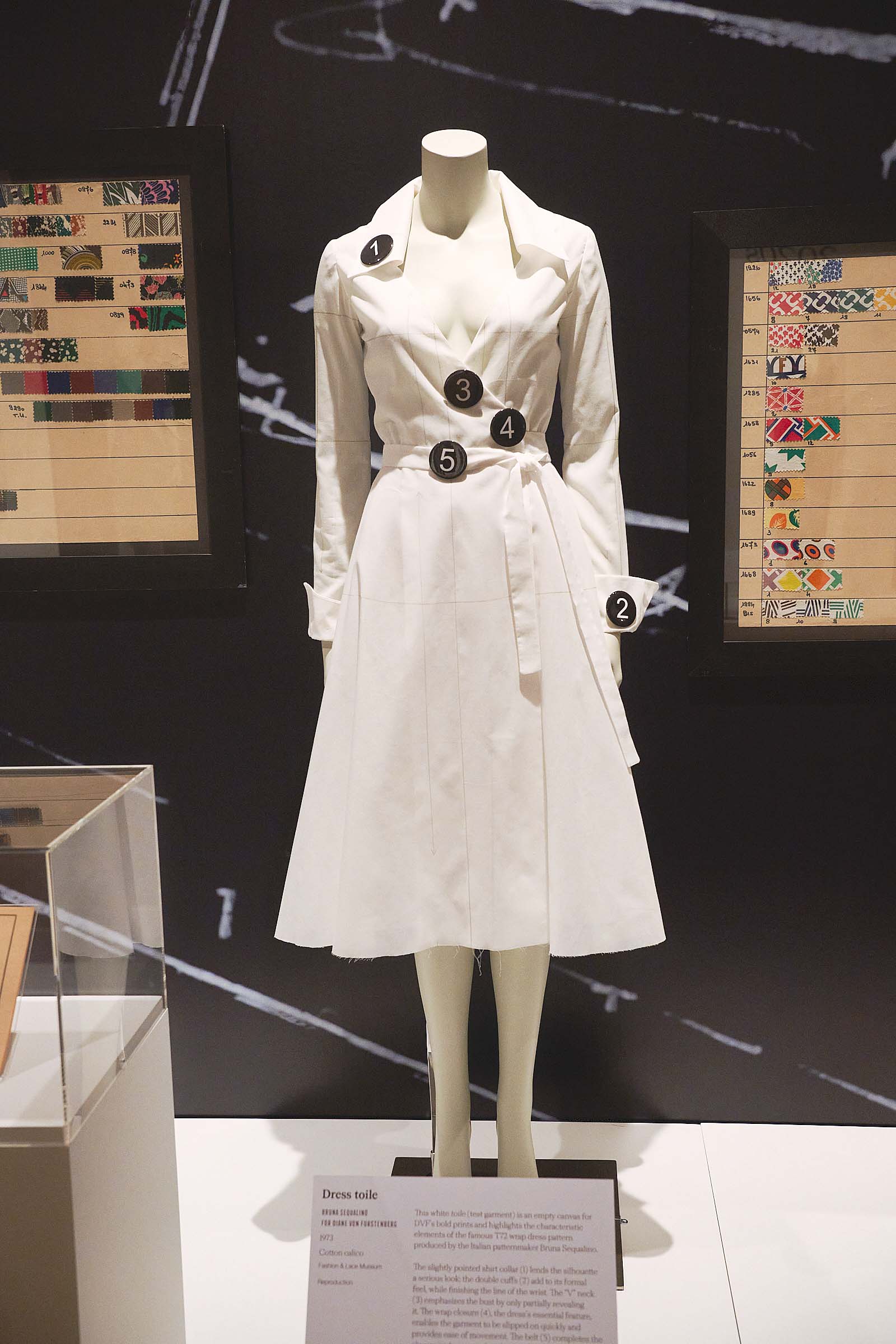
The “test” wrap dress with swatches of various prints in the background. Halban Photography, courtesy of Skirball Cultural Center.
“She thinks about how sunsets look against her fabric,” said Thurston. A “test” dress provided a glimpse of the editing and evolution of the dress. It could be mini, midi or maxi, and, even with a collar, the V-neck structure was constant to give women as much or as little cleavage as desired. Even as the wrap dress became a uniform seen in the pages of fashion magazines and hanging on department store racks, individuality was never sacrificed from that original. The dress became a signature for women, at home, at work and at play. It was reasonably priced, made in an easy-to-care-for material, could be tied tightly or loose fitted and, above all else, the glamorous face of the brand was her own best model and marketer. She was featured on magazine covers as her brand became a phenomenon desired by celebrities and modern women looking to be stylish, sexy and at ease in their own skin all at once. Her ideas were never to reinvent the wheel but to change the perspective for women.
Quotes from von Furstenberg are scattered as the writing on the wall, becoming, so to speak, a backdrop to the more than 50 garments shown from her archives. One of the most intriguing features the phrase: “Woman designers always think of the woman first” and presents silhouettes by other important female fashion designers of the Twentieth Century, some earlier trailblazers and other contemporaries. These include a 1950s Claire McCardell “pop-over dress” that was itself a wrap-around fit intended to provide simplicity and practicality for women, as well as pieces by Madeline Vionnet, Donna Karan and Sonia Rykiel. Von Furstenberg built an empire that offered a confidence to her clientele and an unfailing knowledge of what they wanted before they may have realized it.
The presence of art and artists was another outlet integral to von Furstenberg’s fabrications. Jackson Pollock’s paintings and Andy Warhol’s screenprints of flowers found their way into the aesthetics that she favored. Included in the exhibition is a sleeveless dress on display with a likeness of von Furstenberg from her personal Warhol silkscreen portrait. The message of looking from the inside out has remained on trend for von Furstenberg. In an @therealdvf Instagram post, a black and white photo of von Furstenberg and Warhol is captioned with the following: “With Andy Warhol (1974) in my first wrap dress! Some things never go out of style…Warhols certainly didn’t!”
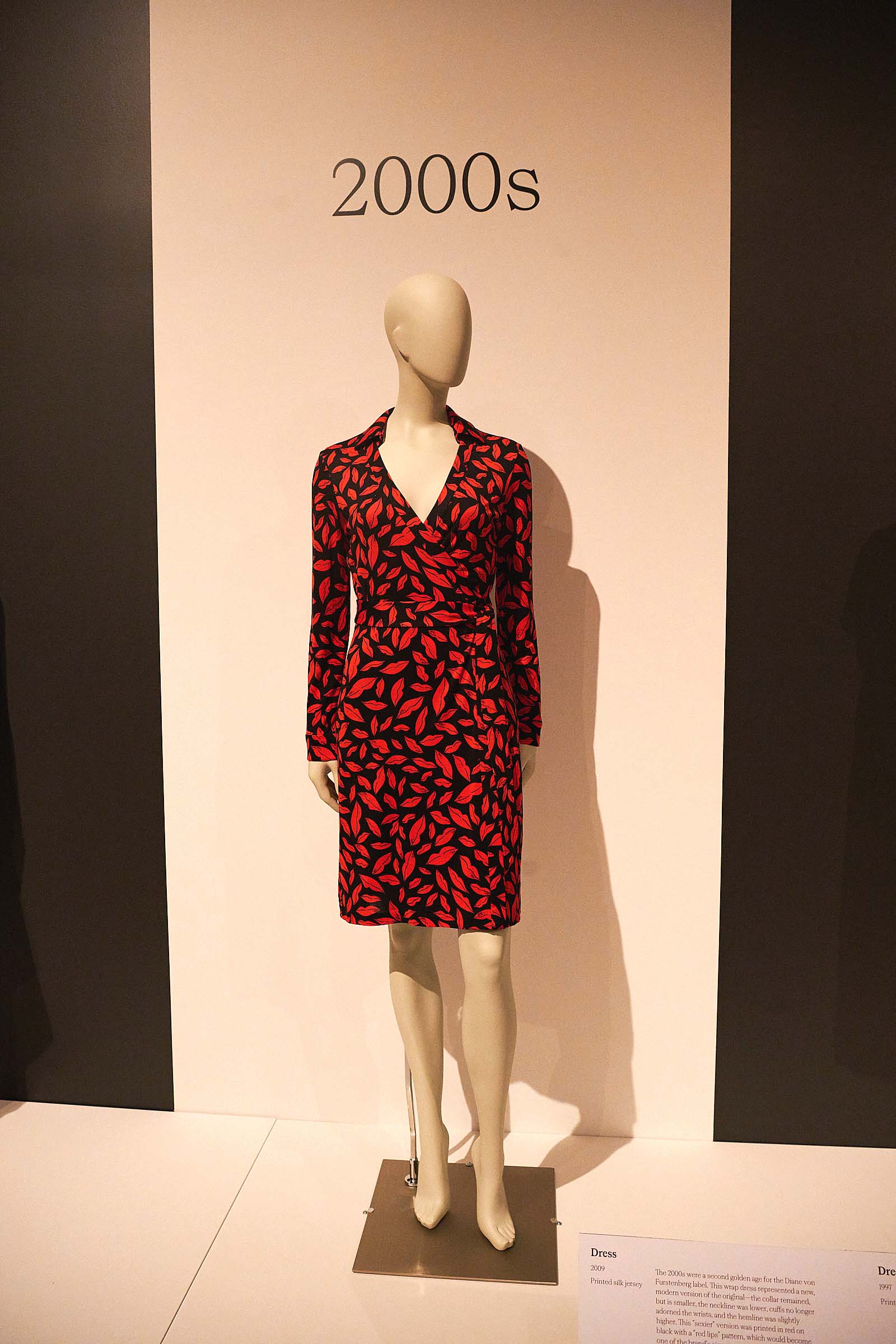
A circa 2000 wrap dress on view in the exhibition. Halban Photography, courtesy of Skirball Cultural Center.
In 2019, in perhaps her most personal of prototypes, von Furstenberg wore a Lady Liberty gown to the Met Gala, fabricated in a print of herself and complete with crown and torch as accessories. In this exhibition, this is shown under a lighted sign stating, “Freedom is Everything,” and the garment is perhaps the most literal of examples in tribute to her mother’s words. It is a title that von Furstenberg has said she has always carried with great internal responsibility. That same year she was a key fundraiser in supporting the Statue of Liberty Museum in New York City. Her ensemble at the Met Gala conveyed dual meaning as her philanthropic actions, too, follow suit.
In honor of the wrap dress and its half-century milestone, von Furstenberg produced a print pattern titled “Crosswords” in the vein of a New York Times crossword puzzle filled in via print with some of her favorite words such as “dare” and “truth.” It is appropriate as the final focus turns to what is described as “WeAr(e) Able Stories,” that is a play on “Wearable Stories” and “We Are Able.” It offers a mixed media platform of information about the foundations von Furstenberg has established, and the DVF Awards that she distributes annually to promote women transforming the lives of other women.
Somehow, the fairytale von Furstenberg once thought may have been her legacy turned into a version, nearly overnight, of the American dream she may never have anticipated. Like the wrap dress, it was and continues to be a destiny empowered by generations, past, present and future.
“Diane von Furstenberg: Woman Before Fashion” is on view through August 31.
The Skirball Cultural Center is at 2701 North Sepulvida Boulevard. For information, 310-440-4500 or www.skirball.org.

